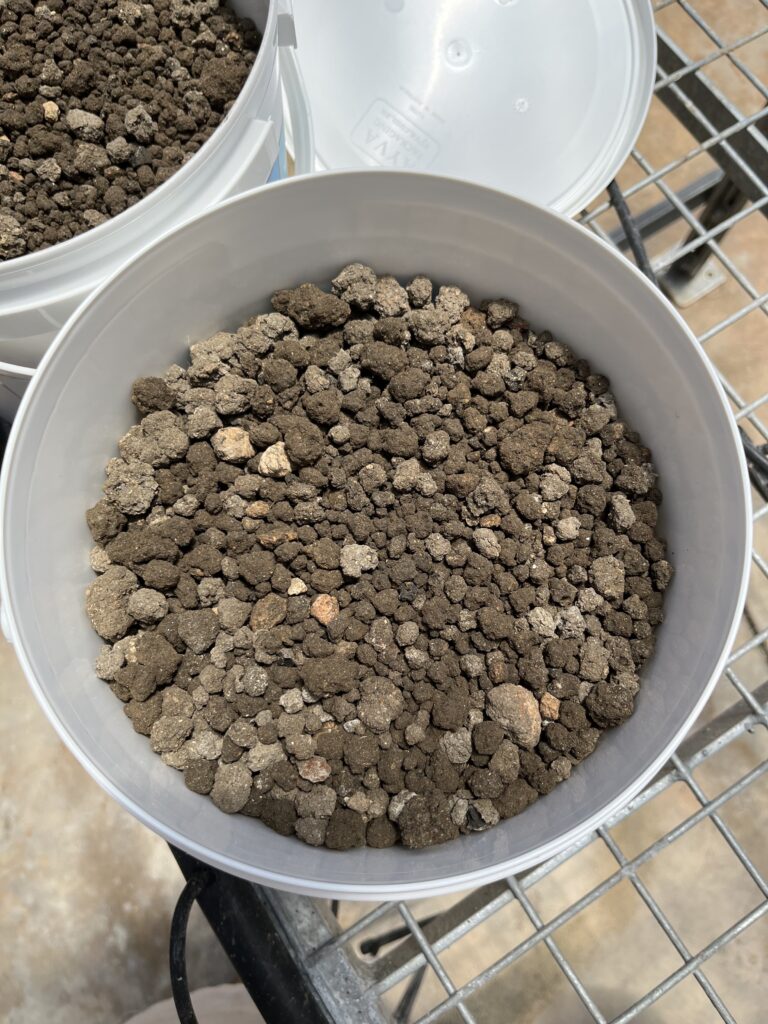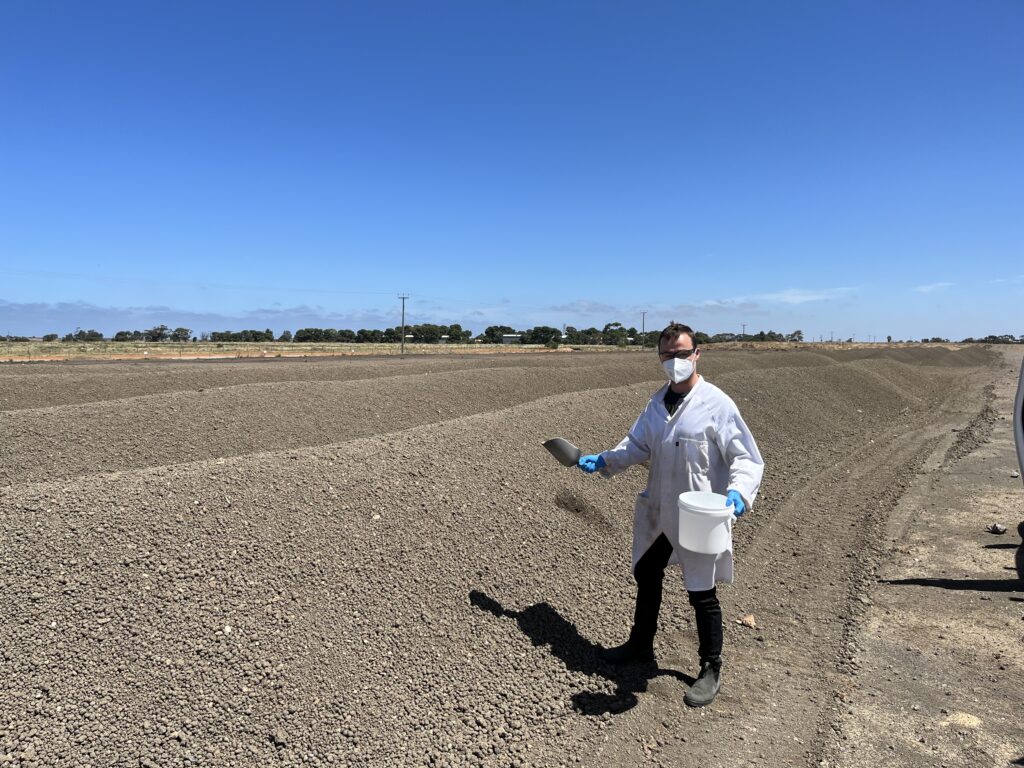Understanding the soil microbiome for the sustainable use of biosolids
The use of biosolids, the end product of wastewater treatment, as a fertiliser for crops forms a circular economy of nutrients between humans, the soil and our food. By understanding the microbiome, researchers aim to enhance the benefits of biosolids and ameliorate the impacts of pollutants.
The Challenge

Sample of biosolids
Agriculture keeps us fed and sewerage systems keep us healthy. Crops have to be fertilised, and sewage sludge has to be dealt with. Biosolids (the end products of sewage and wastewater treatment) are a great organic alternative to synthetic fertilisers, the production of which generates significant greenhouse gases (Maartje et al. 2022, Menegat et al. 2022). Biosolids can add organic matter, carbon, phosphorus, zinc, copper and iron to the soil improving soil health and driving increased crop yields. Biosolids may be more sustainable than synthetic fertilisers as their use forms a circular economy of nutrients cycling between humans, the soil and our food. Though biosolids can be of great benefit, organic contaminants that accumulate in wastewater systems, such as plastics and per- and polyfluorinated compounds (PFAS), are an ongoing concern in their management and sustainability. The role the soil and biosolids microbiomes play in soil health and crop productivity, and the ability to ameliorate the impacts of organic pollutants, remain poorly understood.
Our response
This research will use multi-omics techniques to generate the knowledge required to tackle these opportunities to enhance soil health and crop productivity, as well as limiting the impacts of contaminants. Soils will be incubated in the lab with biosolids and organic pollutants, including PFAS, then sampled over time to observe the interactions between the biosolids and soil microbiomes as they assemble into a new community. DNA sequencing will be used to track the microbial community composition (who is there), whilst RNA sequencing will allow to us to examine their functional response (what they’re doing).
Expected Outcomes
By understanding the community composition and function of the biosolids/soil microbiomes, MOSH researchers aim to unlock the potential for designer microbiome development for enhanced benefits of biosolids. For example, by identifying microbes known to improve soil health or crop performance, researchers can build a suitable community around them to increase their abundance in biosolids. Similarly, if microbes contributing to contaminant breakdown are identified, these will be investigated further for their use in bioremediation strategies.

Dr Cameron Reid collecting dried biosolids.
The team
Dr Cameron Reid – Postdoctoral Fellow
Dr Anna Kaksonen– Project Leader and Group Leader
Dr Jason Kirby – Group Leader
Dr Mark Farrell – Team Leader
Adrienne Gregg – Research Technician
Steve Szarvas – Research Technician
Thomas Carter – Research Technician
Sheridan Morton – Research Assistant
References
Maartje et al. 2022 – Australian grains baseline and mitigation assessment
Menegat et al. 2022 – Greenhouse gas emissions from global production and use of nitrogen synthetic fertilisers in agriculture | Scientific Reports (nature.com)
